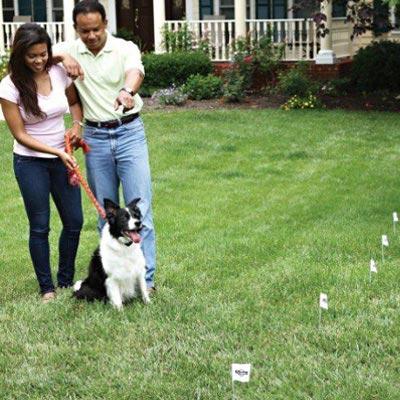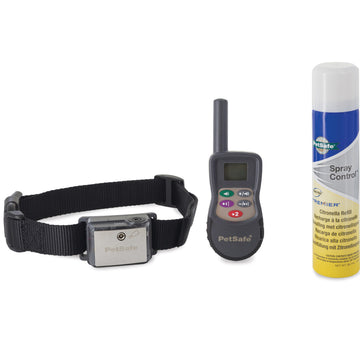 By Natalie Lester, PetSafe Brand Marketing Specialist
By Natalie Lester, PetSafe Brand Marketing Specialist
When Natalie adopted Emma, she knew one thing: puppy training had to start immediately.
When I adopted a puppy four short months ago, I had some basic dog training instruction but no more than the average pet owner. I knew Emma’s training needed to start immediately. One of our trainers, Michelle Mullins, CPDT-KA, taught a class to help us understand how dogs learn, and the insight really helped me.
Much to my surprise, pets learn by making associations just like we do. In fact, Michelle said that all animals follow similar patterns of learning. Of course, we have a few advantages (like shared verbal and body language) that they do not. Therefore, they really learn primarily though experiences and training, which Michelle described as a manipulation of experiences. I had never thought about training like that, but it is so true. Emma is unaware of when I am training her and when I am not, it is all just an experience for her. There are two types of training, or conditioning, called classical and operant.
Classical is a learned association of two events, like if your pet knows where the treats are in your house like Emma does. She knows that when I reach into her cabinet, she will be getting a reward for good behavior. So, she usually rushes over to me and sits down to wait patiently (yes, a puppy can be patient when there is food involved).
Operant conditioning says behavior is a function of its consequences. In other words, behavior that is rewarded gets repeated, and behavior that is punished will occur less often. There are four learning quadrants, which are explained in the chart below.
| Add + = Positive | Remove - = Negative | |
| Something Good | Positive Reinforcement R+ Behavior Increases (Your puppy is chewing on a Busy Buddy toy you gave him. You stop as you walk by and pet/praise him, “Good dog!” The puppy enjoys the petting and praise and increases how often he plays with that toy.) | Negative Punishment P- Behavior Decreases (The dog loves greeting you when you arrive home. However, she jumps up on you repeatedly. When she starts to jump, you turn away and go back out the door. She stops jumping so you will stay.) |
| Something Aversive | Positive Punishment P+ Behavior Decreases (The dog barks. The spray collar she is wearing sprays an unpleasant smell at her face. She really hates that spray. Her barking decreases. There can be fallout, depending on the dog’s genetics and temperaments, so you have to know your pet.) | Negative Reinforcement R- Behavior Increases (Your dog barks at the mail carrier because the dog wants him to go away. The mail carrier delivers the mail and goes away each time. The dog is rewarded for barking by the mail carrier leaving and continues to bark.) |
Sound confusing? Don’t worry! Michelle assured me that it is. So, I’m right there with you. We'll explain how to use these methods to train your dog in a later blog post.
How do you train your pets? What quadrants do you use for training? Stay tuned for the next week as we share how we apply these ideas to train our dogs!
ABOUT NATALIE As the PetSafe Brand Marketing Specialist, Natalie manages The Paw Print blog and generates other brand related content including public relations and promotions. Before PetSafe, Natalie worked in the local media covering politics, education, and religion. Natalie’s puppy, Emma, spends almost as much time in the office as she does.



